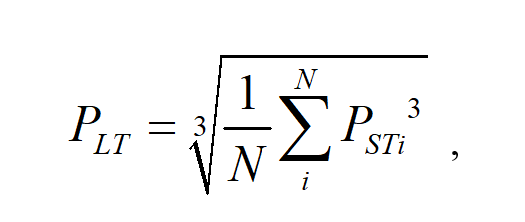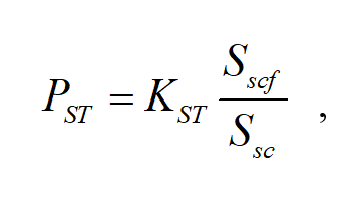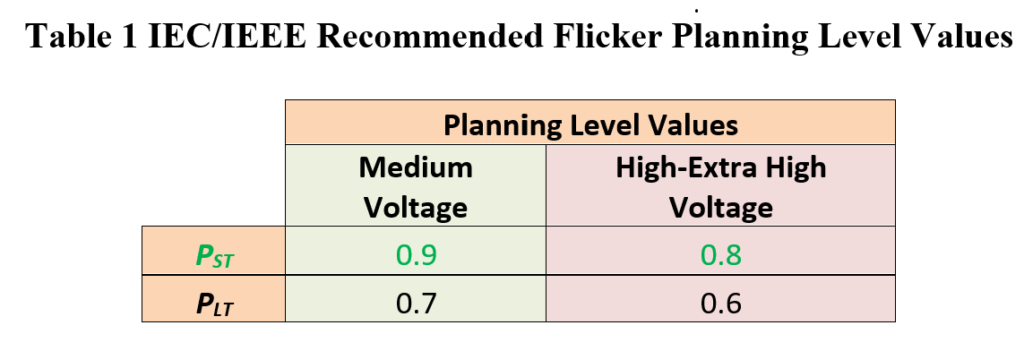Electric Power Systems Flicker Analysis
 By: Bikash Poudel, Senior Consultant
By: Bikash Poudel, Senior Consultant
bpoudel@enernex.com
865-218-4600 x6168
Electric power systems flicker is a human perception of change in brightness level of lighting. The intensity of flicker is dependent on both the frequency and the magnitude of voltage fluctuations. There had been studies that showed the variations of voltage as small as 0.3% in the frequencies around 8.8 Hz can be perceived by 50% of the population. Flickers can cause adverse physiological effects and the severity depends on the amplitude and frequency of voltage variations. Apart from irritation, eye-strain and headaches, the high dose of flicker can cause problems such as epileptic seizures to some people prone to epileptics. Highly nonlinear loads such as electric arc-furnaces, welders or heavy duty power tools are primary source of flickers. Industrial plants, or facilities that uses such heavy duty power tools or large electric motors are usually required to perform a flicker study to comply with flicker requirements.
IEC 61000-4-15 [1] defines two indices to evaluate the flicker levels, i.e. short term flicker index and long term flicker index. The short term flicker index is defined as,

where Px is the percentiles that represent the instantaneous flicker sensation in perceptibility units that exceeded x% for observation window of 10 minutes.
The long term flicker index is essentially derived from short term flicker index, and is defined as,

here PSTi is the consecutive values of the short term flicker index. N=12 is recommended by IEC for field measurements for 2 hours measurement window.
For planning purpose, the short term flicker index can be calculates as,
 where KST is the severity factor, Sscf is short circuit power of the furnace and Ssc is the short circuit value at Point of Common Coupling (PCC).
where KST is the severity factor, Sscf is short circuit power of the furnace and Ssc is the short circuit value at Point of Common Coupling (PCC).
IEC 61000-3-7 [2] and IEEE 1453-2015 [3] recommended flicker planning level values for medium and high voltage is shown in Table 1. Flicker values calculated for all the studies done by EnerNex are compared against these values to evaluate the flicker emission levels.
 The flicker indices have to be smaller than the values mentioned in Table 1 to meet the IEC/IEEE recommended limits. If the limits are not met, EnerNex recommends mitigation measures such as series reactor or Static Var Compensator (SVC) to be installed to bring down the flicker indices values. EnerNex recommends Flicker meters be installed on-site and analyze the measurement data to verify the flicker indices compliance.
The flicker indices have to be smaller than the values mentioned in Table 1 to meet the IEC/IEEE recommended limits. If the limits are not met, EnerNex recommends mitigation measures such as series reactor or Static Var Compensator (SVC) to be installed to bring down the flicker indices values. EnerNex recommends Flicker meters be installed on-site and analyze the measurement data to verify the flicker indices compliance.
References
| [1] | “IEC 61000-4-15 Electromagnetic Compatibility-Part 4-15: Testing and measurement techniques-Flickermeter-Functional and design specifications,” IEC, 2010. |
| [2] | “IEC 61000-3-7 Electromagnetic Compatibility-Part 3-7: Limits-Assessment of emission limits for the connectin of fluctuating installations of MV, HV and EHV power systems,” IEC, 2008. |
| [3] | “IEEE 1453-2015: IEEE Recommended Practice for the Analysis of Fluctuating Installatios on Power System,” IEEE Power and Energy Society, 2015. |


